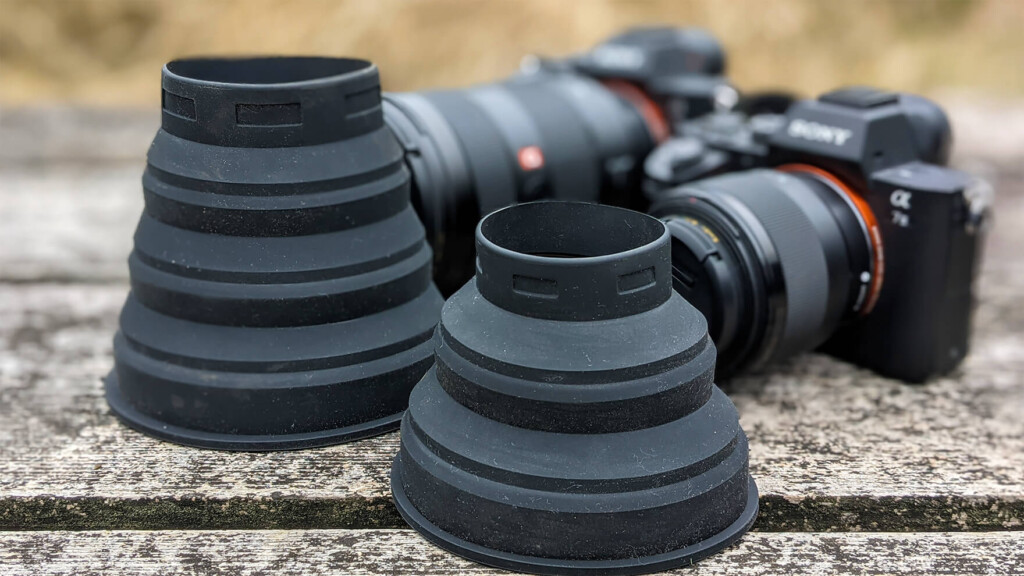
A must-see for multi-lens fans and car window lovers! Makuake currently running KUVRD Universal Lens Food Review Super convenient if you're comfortable with how to use it
If you are using a camera in the mountains, lens hoods are essential to protecting your lens from a variety of obstacles, such as rocks, tree branches, gravel, dust, and rain. Also, backlighting is often used, which helps to suppress flares and ghosts.
The trouble at that time is the hassle of putting on and removing the lens hood. I usually use an original lens hood, but after taking out the camera every time,
- Turn the hard plastic hood set upside down on the lens and remove it.
- You can flip the front and back and hold it on the tip of the lens.
You must repeat this action. And once I've finished taking the photo, I'll go back to the other way. If I came to the next shoot point again... ah, it would be annoying.
In the end, I always end up plunging into the front pack, still wearing a stiff, heavy hood. Not only is it quite clunky, but it's also bulky, and some bags can't close the opening tightly, making it extremely dangerous to drop it.
table of contents
A convenient lens hood that can be attached regardless of manufacturer or model, and does not allow glass reflections
the new product, " Universal Lens Hood (ULH) KUVRD , which is currently being crowdfunded by Makuake .
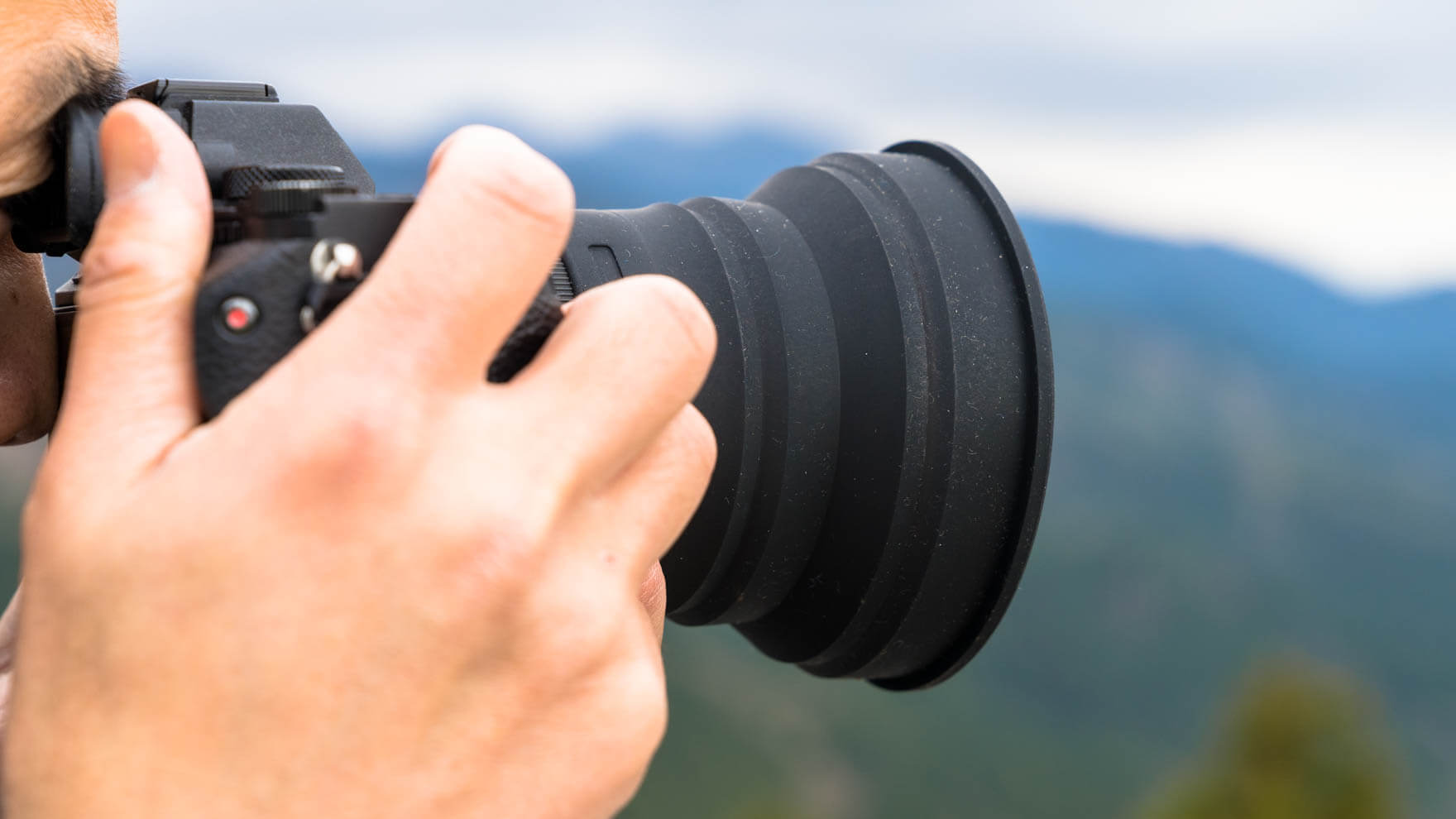
According to the designer, the foldable silicone lens hood fits 99% of lenses regardless of manufacturer or model, and does not create vignetting at the four corners of the frame, and also allows for beautiful shooting with solid light shut out even when shooting through glass. In addition, it is easier to put on and take off than before, and for people who carry multiple lenses, there is no need to bring their own dedicated lens hoods, which means they do not have to carry the luggage and effort.
Listening to it is full of good things, and this may take your camera style a step further! ? So I immediately contacted HandsAid, the implementer of the project, and sent me the product, and tried it out.
To be safe, all content written in this review has been expressed at the sole discretion of the editorial department in accordance with the same operating policy , and it is not affected in any way by the provider.

Key features of KUVRD Universal Lens Hood
In addition to the features mentioned above, the new lens hood also has a variety of features and features that make camera shooting even more comfortable. First, let's summarize the seven product features listed on the crowdfunding page below.
- Easy to put on and take off
- The shape doesn't fall out, it doesn't fall out
- Can be attached to various lens manufacturers and sizes
- You can take photos without any reflections even through the window glass
- Various lens filters that differ from the lens aperture will be available
- It also serves as a cushion to protect the camera
- Free replacement guarantee in case of damage
Personally, what caught my eye was the ease of use as a hood, but if you use it normally, I think I'd be more grateful that it allows you to take pictures without any reflections even through the window glass. Anyway, I put on the items I had arrived and tried using them while lightly hiking up close.
I tried using it ~Inside the car~
This time I decided to walk along the pleasant ridge from Yabitsu Pass to Mt. Oyama. As we walked along the slurping forest road to the mountain pass, we held up a camera from inside the car along the way.
I tried taking photos with the original hood attached, but even when I attached the hood to the glass window, the reflections were small, but they still remained unchanged (in the dotted line on the left of the photo below). On the other hand, when I attached this ULH and took a picture with the hood close to the glass window, I was able to take pictures without any reflections (right of the photo below). Of course, you can take photos through the glass in a variety of situations, not just in the car window, but also in aquariums, zoos, and airplanes.
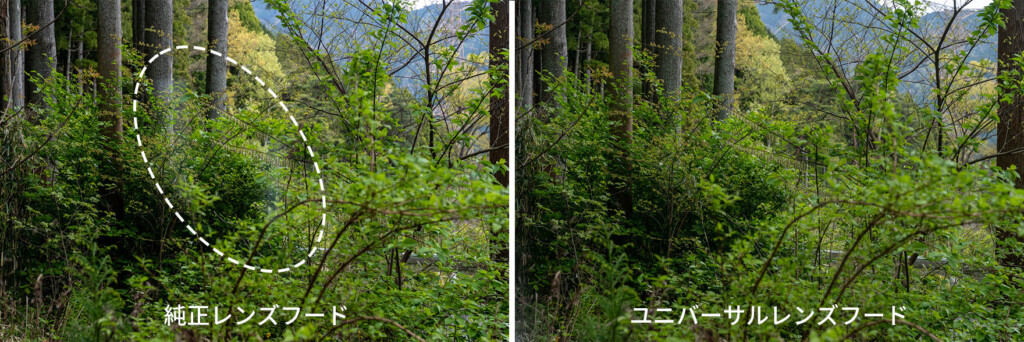
I tried it out - hiking edition
Next, I checked the usability from various angles to see if it works well even in the mountains, such as hiking.
Where I like
Easy storage and set even when the hood is left on
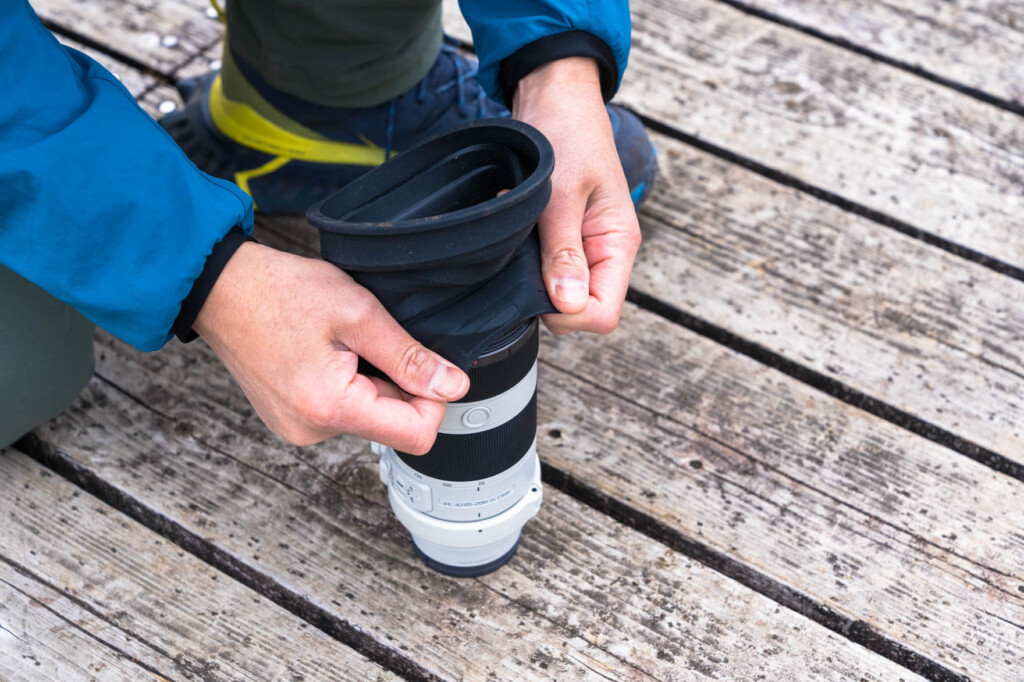
This has been an inconvenience since I've been using plastic hoods for a long time, so I was impressed by the simplicity of how comfortable it is to use. To set the hood, open the opening of the hood and place it over the lens. The flexible silicone material can easily spread out and can be applied to the lens with a certain amount of force. However, since there is a slight pushing force required, I was unable to gently attach it while it was set on a tripod.
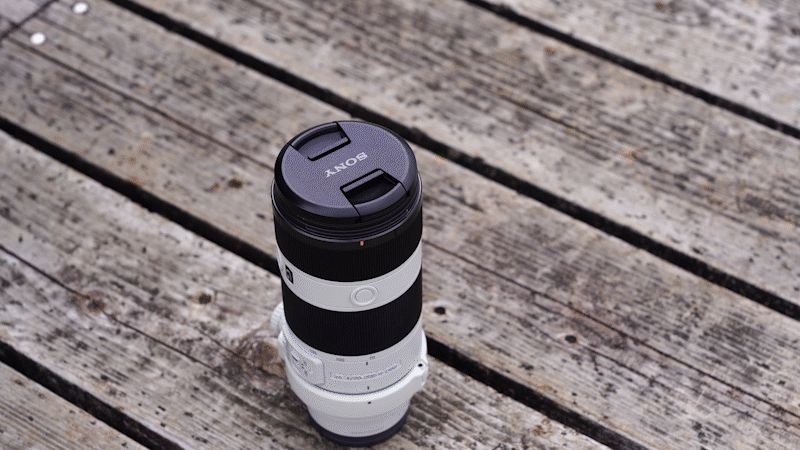
The hood is flexible and easy to fold, and can quickly restore shape when needed (photo below).
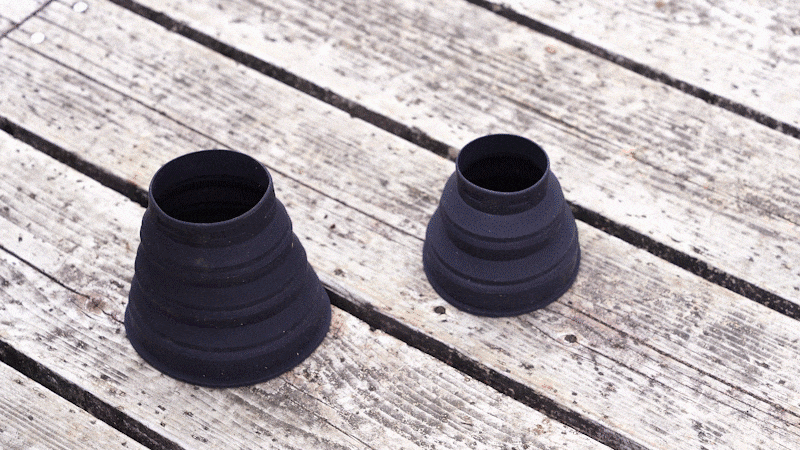
After quickly taking it out, stretching out the hood and taking a picture, fold it up and heading to the front camera bag. This series of actions can be carried out smoothly, so the stress that has been done up to this point is reduced as if it were a lie, and it is certainly comfortable (photo below).

Fits firmly to any lens and is hard to come off and does not lose its shape
The elastic silicone fits perfectly with all the lenses I use, and even if I shake the lens as hard as I can, it never came off or slipped. Also, when you shake the lens, the hood will lose its shape for a moment, but it will return to normal soon. For this reason, I don't know how to use it in extreme ways, such as quickly swinging and firing at high speeds, but as long as it captures the scenery, it is not a problem (photo below).
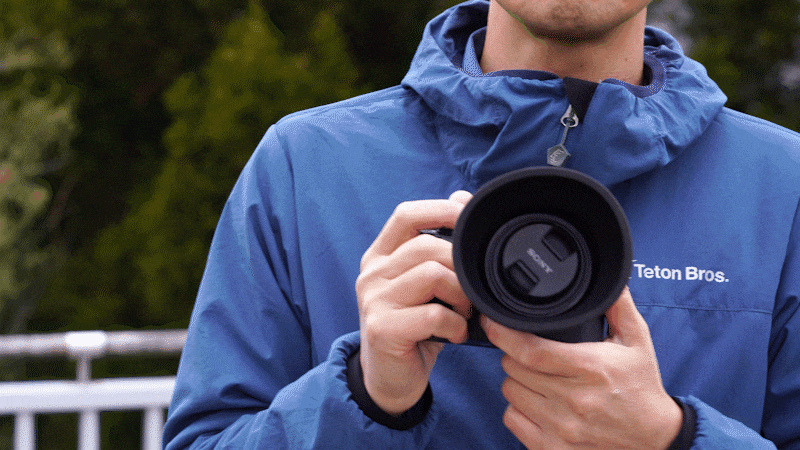
The length of the hood can be adjusted so you don't have to worry about vignetting with any lens
In the case of a fixed hood, if the size does not fit, the shadows of the black hood will appear on the four corners of the lens, resulting in vignetting. This is especially true for wide-angle lenses, but with this hood, the depth can be adjusted by folding it like a bellows, so there is no need to worry about that (photo below).
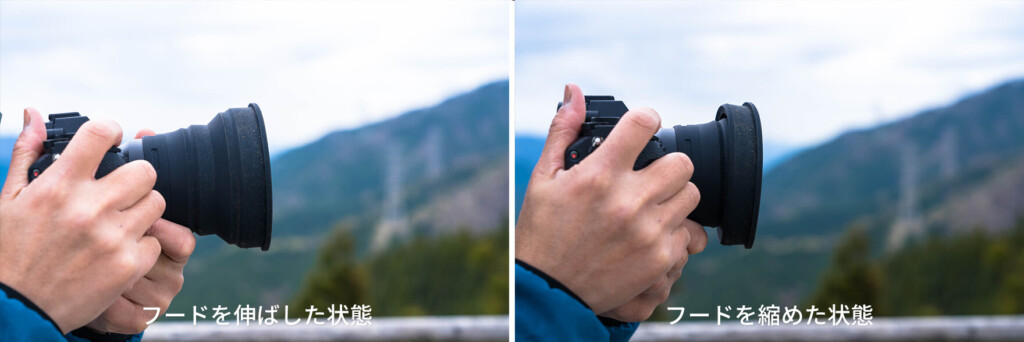
However, as I will explain later, with wide-angle lenses, vignetting may inevitably occur depending on the position where the hood is set.
Filters of different diameters can be used in combination (moving CPL filters, etc.)
Generally, lens filters are fixed to the tip of the lens, but by pushing the filter between the inner walls of the lens hood, you can use a circular filter that is normally too large to fit on the inside of the hood. Filters that were needed for each lens of various diameter may no longer be needed in the future (photo below).
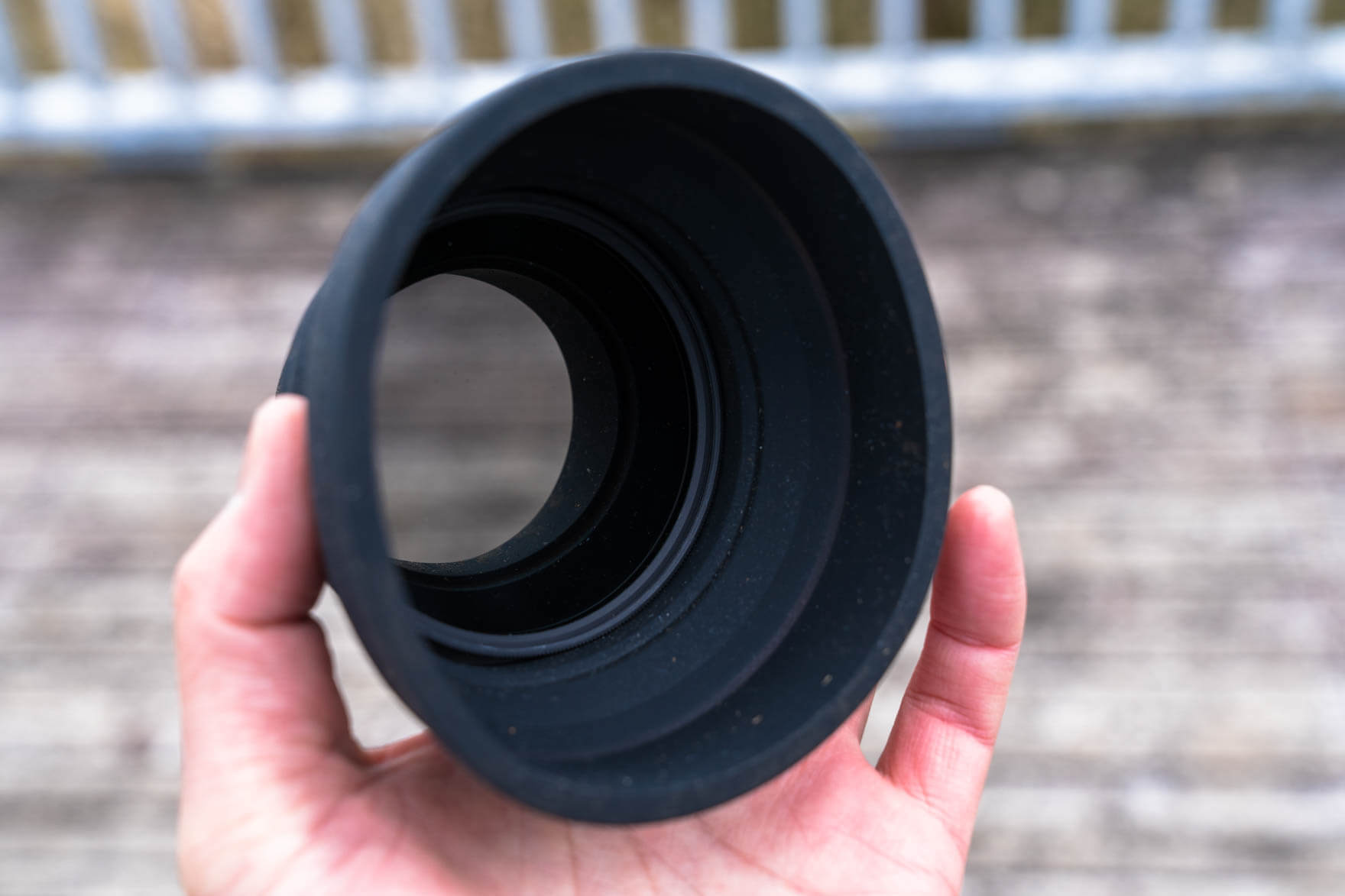
However, due to the mechanism of fixing it to the inner wall once, the outer periphery of the filter cannot be moved using variable ND filters or CPL filters, so not all filters can be shared. This function can be used as an emergency response in the event that you forget while you're out and about.
What I was interested in
With zoom lenses that change in length, the silicone part may interfere with zooming depending on the position you wear.
Conversely, there were some parts that caught my eye against my expectations. I mainly use a 24-70mm F2.8 lens that expands the body length when zooming, but the silicone part may overlap with the expandable part, which may interfere with the zooming (photo below).
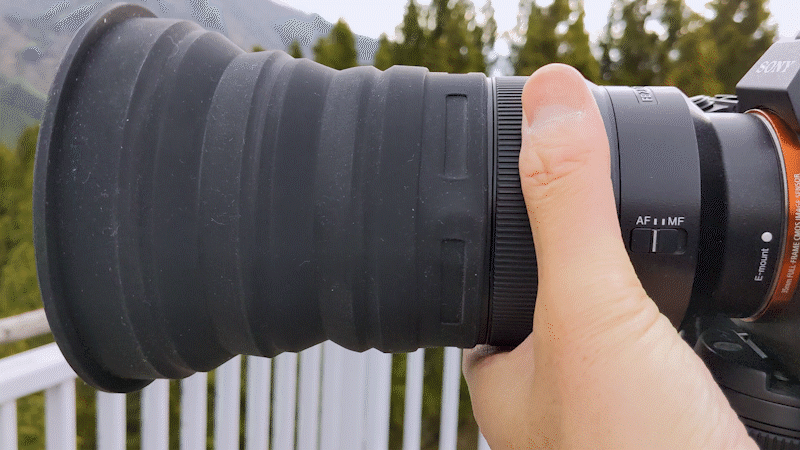
With a zoom lens that changes length (unless you adjust it to the right place), it will interfere with the zoom ring, causing it to get in the way of operation.
Then, if you avoid the expandable part and push the lens hood all the way backwards, it will overlap with the zoom ring, making it difficult to zoom in, or if you set the zoom ring completely over it, the hood will be too far behind and not enough (photo below).
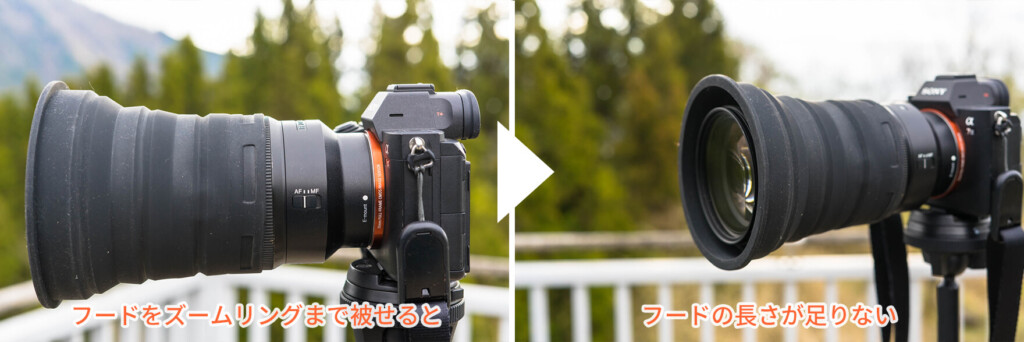
If you use the last resort to avoid all the telescopic parts and zoom rings and set them near the tip, this is still too tip and easily falls off (photo below). Moreover, even when the state is at its most shrinkage, vignetting will occur.

In the end, there is no position that will clear all of the above, so it is difficult to continue using the lens hood at a certain position, and it has become necessary to adjust the hood position every time you change the focal length using the zoom function. Of course, this kind of thing won't happen with a zoom lens with no change in length (photo below), but it has a pinpoint effect on how I use it.
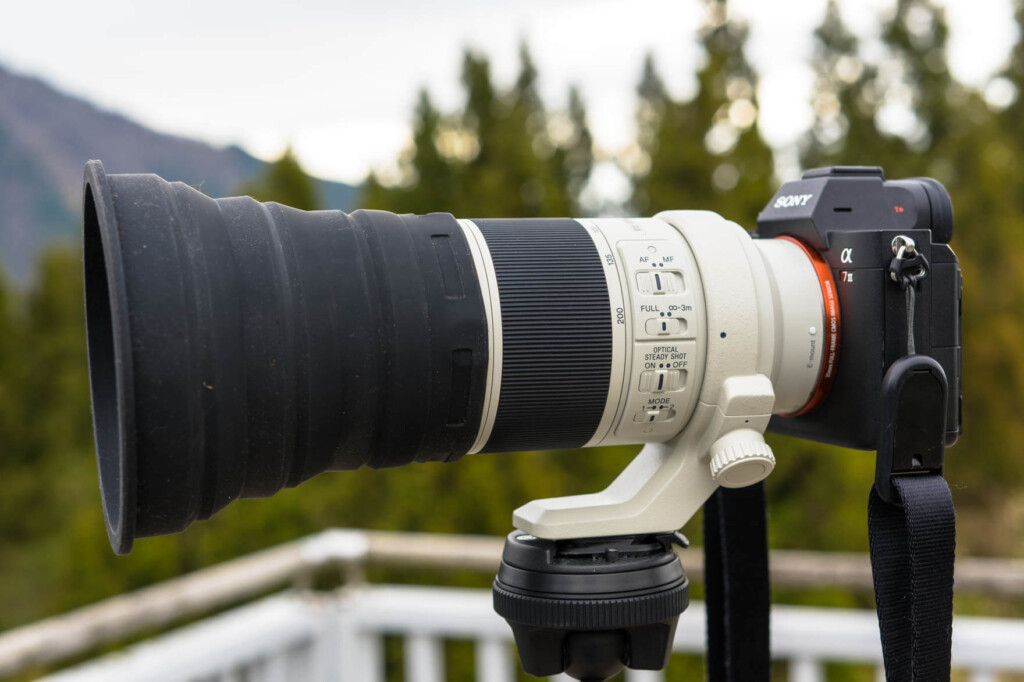
It's prone to dust
Another thing that bothered me was the dust issue. Silicone rubber has the property of easily absorbing dust, and unfortunately this hood was no exception. Furthermore, due to the effects of static electricity, once dust has been attached, it cannot be removed even if it is removed, and dust will collect around the lens. In the outdoors, there is a wide variety of garbage, not just a bit of dust, but also fine sand and weeds, which has been quite stressful.
summary
Universal lens hoods are a great alternative to previous plastic lens hoods, and are extremely interesting in that they can be used with multiple lenses and shared filters. You can also feel safe with services that continue to be used comfortably, such as a free replacement guarantee in the event of damage. However, to be honest, I used the zoom lens (FE 24-70mm F2.8 GM) that I currently use requires adjustment depending on the focal length, and it was also difficult to fully enjoy the convenience of outdoor activities, which are tougher than everyday life. However, I can understand that there is certainly a convenience and ease of use when I get hooked, so personally I have found this to be a very regrettable point.
The uses and situations that this product will come into play are more casual occasions, from everyday use to typical travel, rather than hard use in strict environments. Also, if you are primarily using a single-focus lens, this lens hood can provide more benefits than making up for the slightest inconvenience, so we recommend it without hesitation. If you carry multiple prime lenses with you, it will save you storage space and time, making it even more comfortable. Alternatively, users who mainly use zoom lenses that do not change in length will be able to use them very comfortably as the hood does not interfere with operating the lens.
On the other hand, even if you are a city user, you should be careful if you are a user like yourself who mainly uses a zoom lens that changes length. Every time you operate the zoom, you will need to adjust it to the best position, which may mean that you will end up spending a lot of time. Taking these advantages and disadvantages into consideration, this will be a simple but unwanted item in a variety of situations, such as travel and outdoor activities, when you have to wear and remove the lenses.
KUVRD Universal Lens Hood is currently being crowdfunded at Makuake. If you are interested, why not check out the link below for more information and try supporting us?
→→→ Check out the details of KUVRD Universal Lens Hood in the Makuake project ←←←
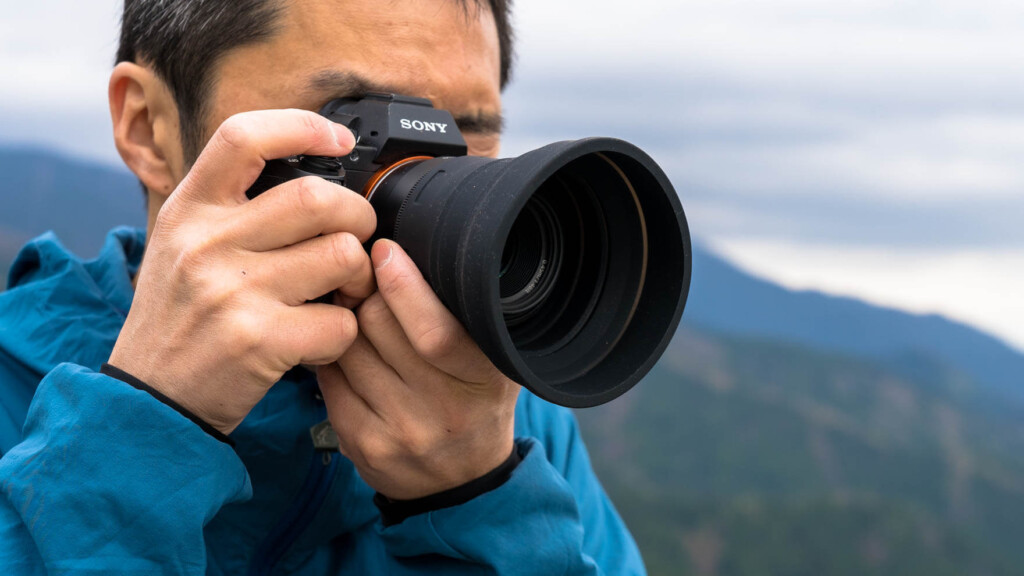


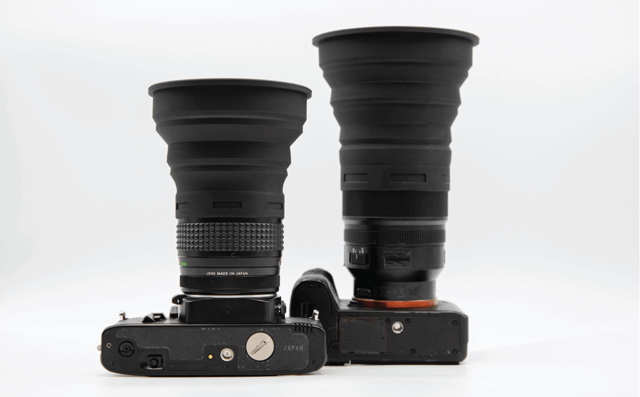
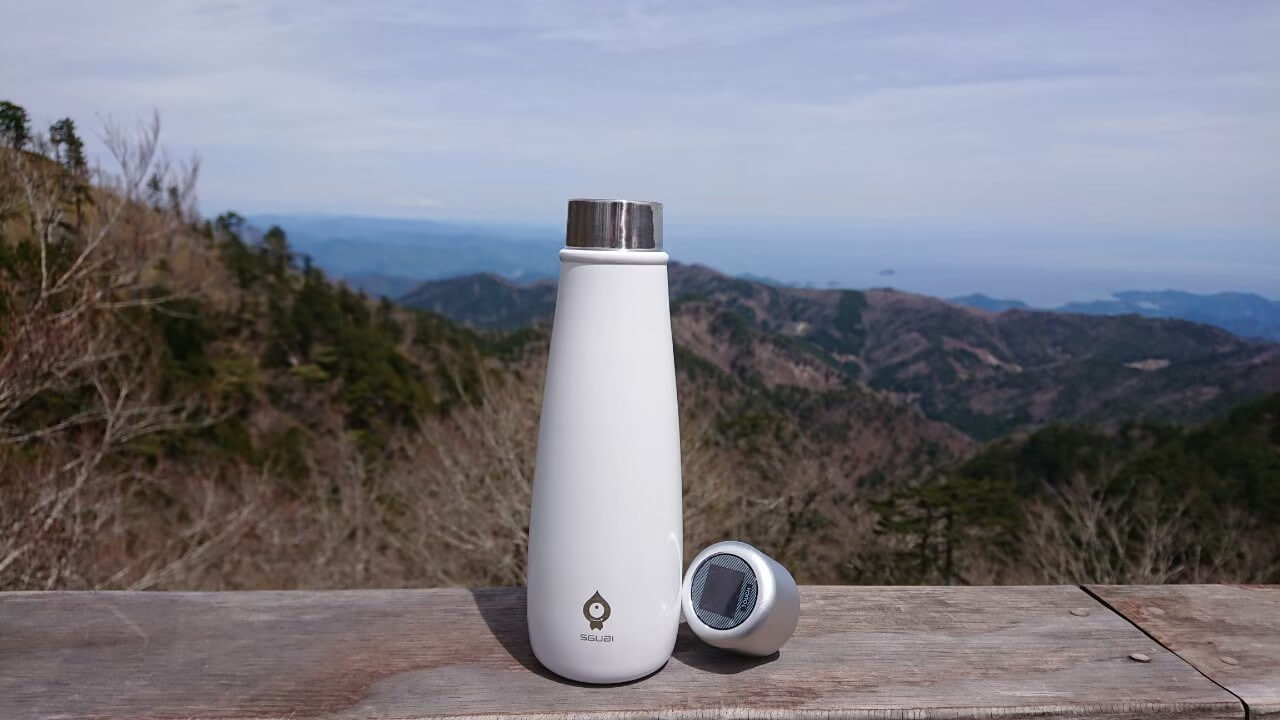 The SGUAI smart bottle from Germany that allows you to see the temperature inside the bottle at a glance is great.
The SGUAI smart bottle from Germany that allows you to see the temperature inside the bottle at a glance is great.